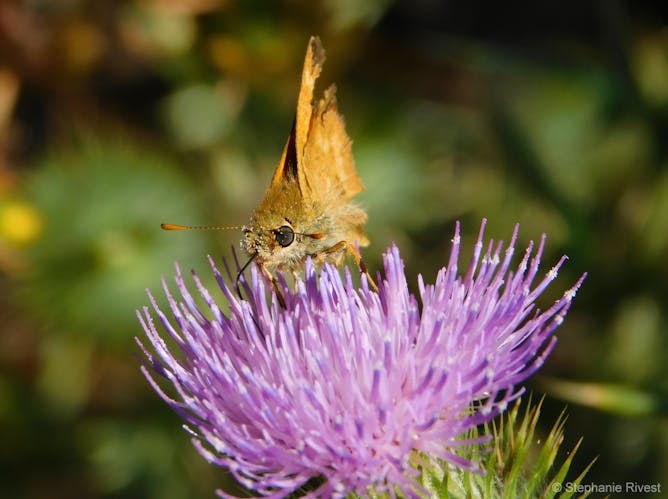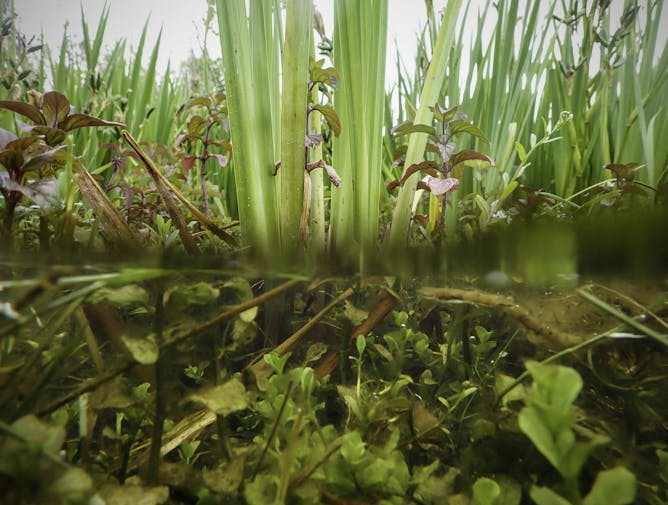|
Invasive plants and animals are often blamed for their negative impact on the native ecosystems they are introduced into. In many instances, these species can disrupt the ecological balance and even lead to the extinction of native species.
That has led scientists and conservationists to come down heavily on non-native species in their conservation efforts. But are all non-native species as bad as advertised?
Some researchers believe otherwise.
Today, in The Conversation Canada, Heather Kharouba and Stephanie Rivest from the University of Ottawa point out that not all non-native species become invasive, and some can actually contribute to regional biodiversity.
They highlight the positive role of some non-native species play in their new ecosystems and call for increased research to identify such species to improve conservation and management efforts in the future.
Also today:
|

A native Woodland Skipper butterfly sips nectar from a non-native Bull’s Thistle flower.
Stephanie A. Rivest
Heather Kharouba, L’Université d’Ottawa/University of Ottawa; Stephanie A. Rivest, L’Université d’Ottawa/University of Ottawa
Conservation practitioners and policymakers must organize and prioritize the management of habitats around whether species are more beneficial or harmful to biodiversity.
|

In October, Loblaw announced a price freeze on one of its in-store brands through a letter from Loblaw Companies chair and president Galen Weston. The promotion ended on Jan. 31.
(Shutterstock)
Dan Guadagnolo, University of Toronto
Galen Weston’s brand as a spokesperson might be friendly and affable, but his organization’s pricing strategies are anything but.
|

Muslim Canadians face mass surveillance that brings entire communities under suspicion.
(Shutterstock)
Baljit Nagra, L’Université d’Ottawa/University of Ottawa; Paula Maurutto, University of Toronto
A recent study highlights how mass surveillance of Muslim communities by Canadian intelligence is based on racist stereotypes about Muslims.
|

Les berges des zones humides sont souvent colonisées par une végétation émergente qui est progressivement remplacée par une végétation flottante et submergée lorsque l'eau atteint une plus grande profondeur.
(Lars L. Iversen)
Jorge García Girón, Universidad de León; Lars Iversen, McGill University; Yingji Pan, Leiden University
La pollution urbaine et agricole, la construction de barrages et les sécheresses menacent la survie des plantes aquatiques, qui sont essentielles à la vie dans les rivières, les lacs et les zones humides.
|
Culture + Society
|
-
Molly Jackson, The Conversation
A roundup of The Conversation’s articles about this holy Christian season and its history.
|
|
Environment + Energy
|
-
Elodie-Laure Jimenez, University of Aberdeen
An integral part of our lives since our hunter-gatherer days, the dog is believed to have evolved through the domestication of a prehistoric wolf. But what kind of wolf was it?
|
|
Health
|
-
José A. Morales García, Universidad Complutense de Madrid
Studies show that contact with nature reduces the activity of the amygdala, a region of the brain linked to intense emotions, stress and anxiety.
|
|